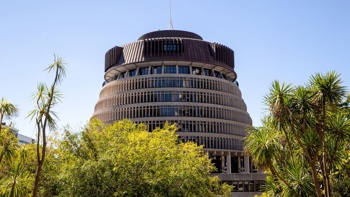
Annual inflation fell in line with economists’ expectations to 4.7 per cent in the final three months of 2023.
This was a decent improvement from the September quarter, when it sat at 5.6 per cent.
Inflation eased more than the Reserve Bank (RBNZ) anticipated in November, when it forecast the figure falling to 5 per cent in the December quarter.
Nonetheless, at 4.7 per cent, the rate remained out of the RBNZ’s 1 to 3 per cent target range.
Largely domestically-driven non-tradeable inflation remained sticky in the December quarter - as expected. It came in at 5.9 per cent. Meanwhile imported tradeable inflation fell to 3 per cent, as petrol prices eased.
The consumers price index (CPI) rose by 0.5 per cent between the September and December quarters.
The rise was influenced by higher prices for housing and household utilities, and was offset by lower prices for food.
Kiwibank chief economist Jarrod Kerr said, “Despite some hurdles ahead (including a Red Sea induced spike in shipping costs, and a migrant fuelled rise in rents etc.), we see inflation continuing to ease back towards 2 per cent.
“We’re on track for inflation hitting the top end of the RBNZ’s target 1 to 3 per cent target band by the second half of this year, which means rate cuts are not too far away.”
RBNZ chief economist Paul Conway will share the central bank’s response to the inflation figures in a speech on January 30.
- Inflation figures expected to fall below Reserve Bank estimates
- Economists are seeing "clear signs" of easing inflation
This will set the scene for the RBNZ’s next Monetary Policy Statement due out on February 28.
ANZ strategist David Croy couldn’t see Conway softening the RBNZ’s tough talk on inflation too much, as this would give the market a reason to cut interest rates too soon.
Any changes of tack in monetary policymaking also need to go through the RBNZ’s Monetary Policy Committee, which won’t meet until late-February.
While Croy expected Conway to maintain the RBNZ’s hawkish stance, he believed that when the RBNZ was eventually ready to start cutting the OCR, it would move quickly.
ANZ economists forecast the first OCR cut occurring in August.
Jenée Tibshraeny is the Herald’s Wellington business editor, based in the Parliamentary press gallery. She specialises in government and Reserve Bank policymaking, economics and banking.
Take your Radio, Podcasts and Music with you









